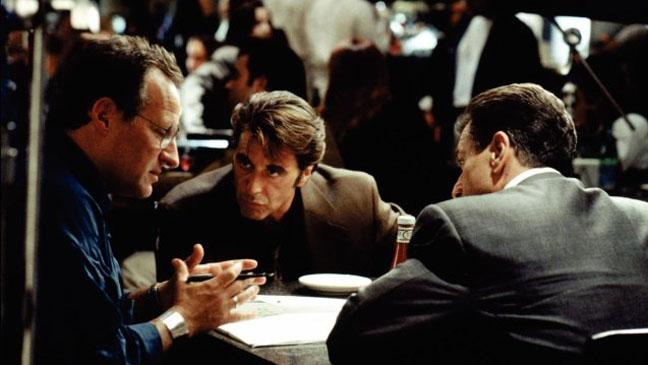That of Michael Mann Heat 2 and the next opus from Sony Pictures Jumanji title of the first round of film subsidies to Hollywood following California’s historic expansion of the Entertainment Tax Credit program, in an effort to revitalize production in the state.
A total of 52 films will receive $334 million in incentives to film in California, the film commission announced Tuesday. They are expected to generate $1.4 billion in economic activity in businesses related to the entertainment industry and employ 8,900 cast and crew members. Most of the filming will take place in Los Angeles, where filming levels are at an all-time low.
This grant allocation resulted in twice as many requests for tax credits compared to the same application window last year, according to the film commission. Major changes to the program reflect its growing popularity: the total cap more than doubled from $330 million to $750 million; the basic credit of 35 percent; and increased accessibility to incentives for independent films.
“These projects would have happened, but not here in California, without our strong program and the changes we made,” said Colleen Bell, executive director of the California Film Commission. She adds, “We are slowly losing market share in entertainment production as other jurisdictions improve their competitiveness, but, right now, we are in an excellent position to not only curb runaway production, but also increase production here in the state. »
In a sign that some feature films may return to their cultural home, ten studio titles will receive credits to be filmed in the state. They understand Sunday (Blumhouse), The fifth wheel (Netflix) and untitled films from NBCUniversal, Warner Bros. Pictures, Paramount Pictures and Apple Studios, which are collectively expected to spend about $340 million in the state over 296 days of filming. Netflix had two titles selected to get $34 million in credits, second only to production vehicles for Heat 2 ($37.2 million) and Jumanji ($43.9 million), NBCUniversal ($38.4 million) and Warners ($39.6 million).
“I have long waited for the day when the California Film Incentive would help us bring films like this home – and now that it has, I am very grateful that ours will be among the first to take advantage of the new program,” the director said. Jumanji Jake Kasdan in a statement. Adds Tom Rothman, CEO of Sony Pictures Entertainment, “The resulting work will bring jobs and revenue to the state at a much-needed time and help filmmakers make the best film possible.”
The announcement comes a week after filming levels in Los Angeles hit a new all-time low during the three-month period from July to September, according to the latest report from film licensing office FilmLA. Most of the filming of the 52 films receiving tax credits will take place in Los Angeles, with Heat 2 planning 47 days of filming in the region.
Also benefiting from grants: 42 independent titles, most of them projects with budgets of less than $10 million. They understand Epiphany, The Amazing Hallelujah Jones Heist, Sun Baked, A Tree is Blue And Night surveillance.
“As chair of Mayor Karen Bass’s Entertainment Industry Council, I know how important it is to create a place that supports storytellers,” said Ellen Goldsmith-Vein, producer on Epiphany (Bill Murray, Kristen Wiig) in a press release. “California has welcomed my career from the beginning, and being able to Epiphany here, that means I can work with the best teams in the industry while still maintaining jobs in my community.
In the round of incentives announced in March, a record 51 films were selected to receive credits to film in California. This total represents the largest number of securities selected in a single incentive award. Most of the allocation was directed toward a slate of 46 independent films.
Another trend to watch will be productions choosing to film in areas outside of Los Angeles, some of which offer an additional increase in qualifying expenses. Filming announced Tuesday will last a record 511 days outside the region.
“This series of awards demonstrates the exceptional reach of our program. We welcome projects ranging from major franchises to independent films led by visionary artists,” Bell said in a statement. “There’s real momentum. With 52 new projects, we’re seeing storytelling thrive once again, creating thousands of jobs and supporting local businesses in communities across the state. California’s film industry isn’t just bouncing back, it’s redefining what’s possible.”









